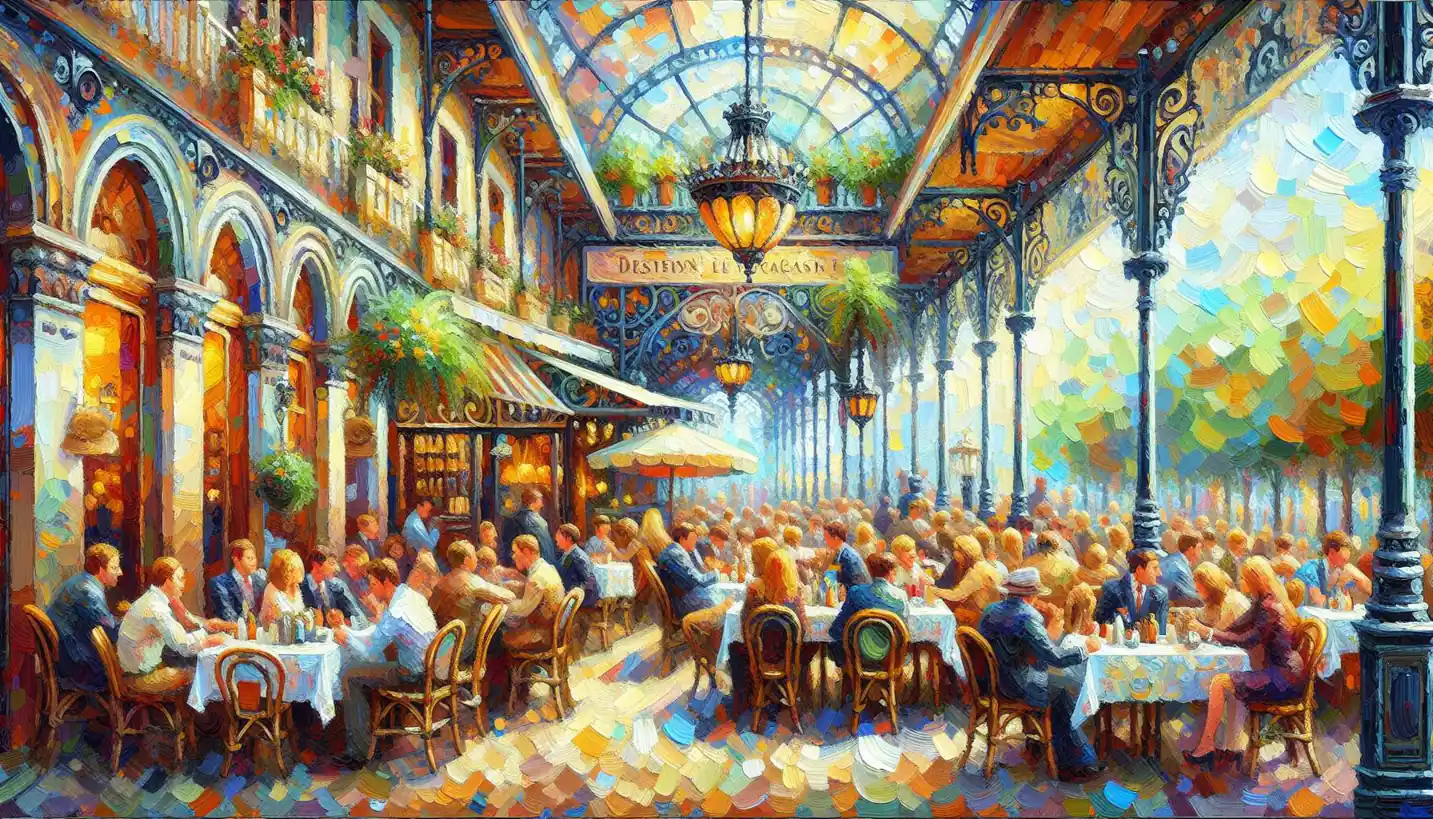· Art · 5 min read
Alignment in Graphic Design: Discovering the Art of Balance and Harmony
Discover the harmony of alignment in graphic design. It’s crucial for creating balanced and aesthetically pleasing artworks.

When you think about graphic design, the first things that might pop into your head are colors, fonts, and maybe some flashy images. But there’s a secret ingredient that holds all these elements together—alignment. It’s a bit like arranging furniture in a room. You wouldn’t just toss your sofa and chairs anywhere, right? You’d put them in a way that makes the room look good and feel comfortable. That’s exactly what alignment does in design. It’s about making sure everything looks just right.
Alignment isn’t just a strict set of rules but more of a guiding principle. It helps designers create order out of chaos and make sure that all the elements within a design come together seamlessly. Whether you’re designing a website, a poster, or even a simple flyer, understanding alignment is key to making it visually appealing and easy to read.
The Basics of Alignment
So, what exactly is alignment? In simple terms, alignment is the way text and graphics are arranged in relation to each other and the page. Imagine you’re setting up a photo wall. You wouldn’t hang up picture frames willy-nilly. You’d probably line them up neatly so they’re evenly spaced and level. That’s alignment in action—and it works the same way on a digital screen or paper.
There are four main types of alignment used in graphic design: left, right, center, and justified. Each serves a different purpose and creates a distinct look. Left alignment is the most common for text, making it easy to read. Right alignment can create a unique edge and is often used in design elements like tables of contents. Center alignment works well for titles and larger headings. Justified alignment, where text is aligned on both left and right, can give a clean, neat appearance to blocks of text.
Why Alignment Matters
Imagine picking up a book where all the text dances all over the page. Sounds chaotic, right? Alignment helps bring structure and organization to design. It makes things look tidy and professional and ensures the eyes flow smoothly from one element to the next. Proper alignment can also highlight the most important parts of a design, guiding the viewer’s attention where it needs to go.
Alignment also builds credibility. Think about a doctor’s office brochure. If the text is misaligned and all over the place, you might second-guess the professionalism of the office. Proper alignment reflects careful consideration, giving your audience confidence in the message you’re conveying.
The Role of Grids in Alignment
One of the secret weapons in a designer’s toolkit is the grid. Think of it as an invisible guide that helps you place elements. It’s like a map for putting everything in its rightful place. Imagine your kitchen without cabinets and drawers—chaos, right? Grids prevent that chaos in design.
Grids can be as simple or complex as needed. They might be a basic series of lines or a detailed network crisscrossing at various intervals. Designers use grids to create a cohesive and harmonious look, ensuring that text and images line up perfectly, no matter the format.
The Human Eye and Visual Hierarchy
Humans naturally find comfort in order, and that’s exactly what alignment provides. When elements line up just right, our brains interpret it as a signal of stability and predictability. This brings us to the concept of visual hierarchy, which is vital in graphic design.
Visual hierarchy is about arranging content to guide the viewer’s eyes to the most important elements first. Imagine reading a menu: you naturally look at the headers first, then the items. Alignment helps create this hierarchy by emphasizing key elements. Larger fonts, bold designs, or colors can draw the eye, while alignment brings everything together seamlessly.
Playing with Alignment for Creative Effect
Rules are made to be broken—you’ve probably heard this saying a million times. And it’s true for alignment too. Sometimes, throwing the rulebook out the window can create dynamic and exciting designs. Misaligned elements can make a statement or evoke a particular emotion. Designers can intentionally choose to disrupt alignment to catch the viewer’s attention or convey a specific mood or message, such as creating a sense of chaos or spontaneity.
This playful approach requires skill, though. Imagine a jazz pianist improvising: they’re breaking from the norm, but they know exactly how and why. Misalignment in design works the same way. It can be effective when done with intention, creating a striking, memorable impact.
Real-World Examples of Alignment
Think of Apple’s clean, minimalist designs. They’re a masterclass in using alignment to create space and clarity, highlighting what is essential. Their website, packaging, and marketing materials use alignment to guide your eyes gently and effectively, leaving a lasting impression of simplicity and elegance.
Consider a busy magazine cover. Even with loads of text and images, alignment is used to create balance and order so that nothing feels overwhelming. Headlines, cover images, and text snippets all align in a way that is both appealing and easy to navigate.
The Future of Alignment
As technology advances, so does the potential for more dynamic alignment techniques. Virtual reality and augmented reality offer new canvases where alignment can create immersive 3D environments. Text and images are no longer restricted by a flat screen, allowing for innovative and groundbreaking uses that could redefine design norms.
Design software also continues to evolve, providing more powerful tools to explore alignment in exciting ways. Tools that allow for automatic alignment and snapping elements into place will keep expanding, giving designers more freedom to experiment without losing structure.
In conclusion, alignment in graphic design is a crucial element that ties everything together, making designs not just aesthetically pleasing but also functional. It provides balance, emphasizes hierarchy, and even lets creative chaos have its day when needed. As we move forward, the principles of alignment may shift, but their core purpose—to bring order and harmony—will always remain.



